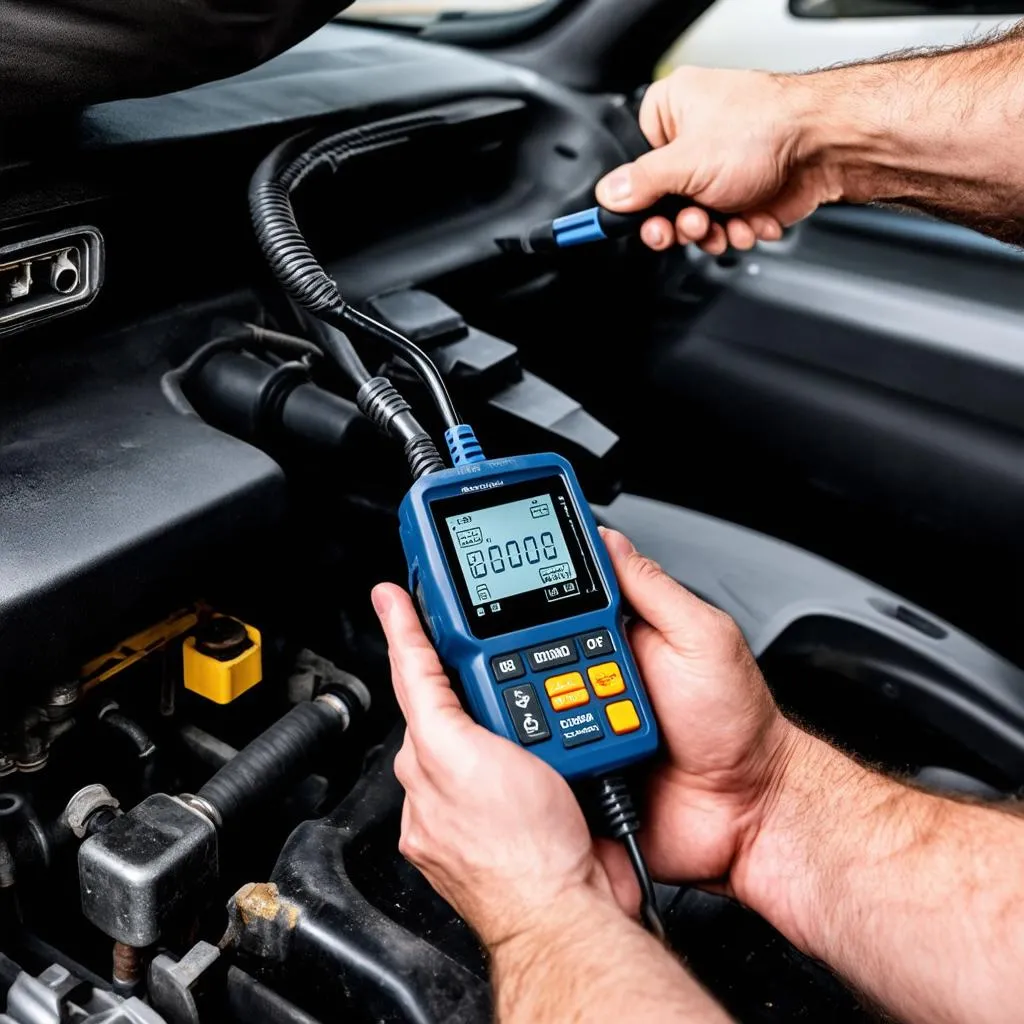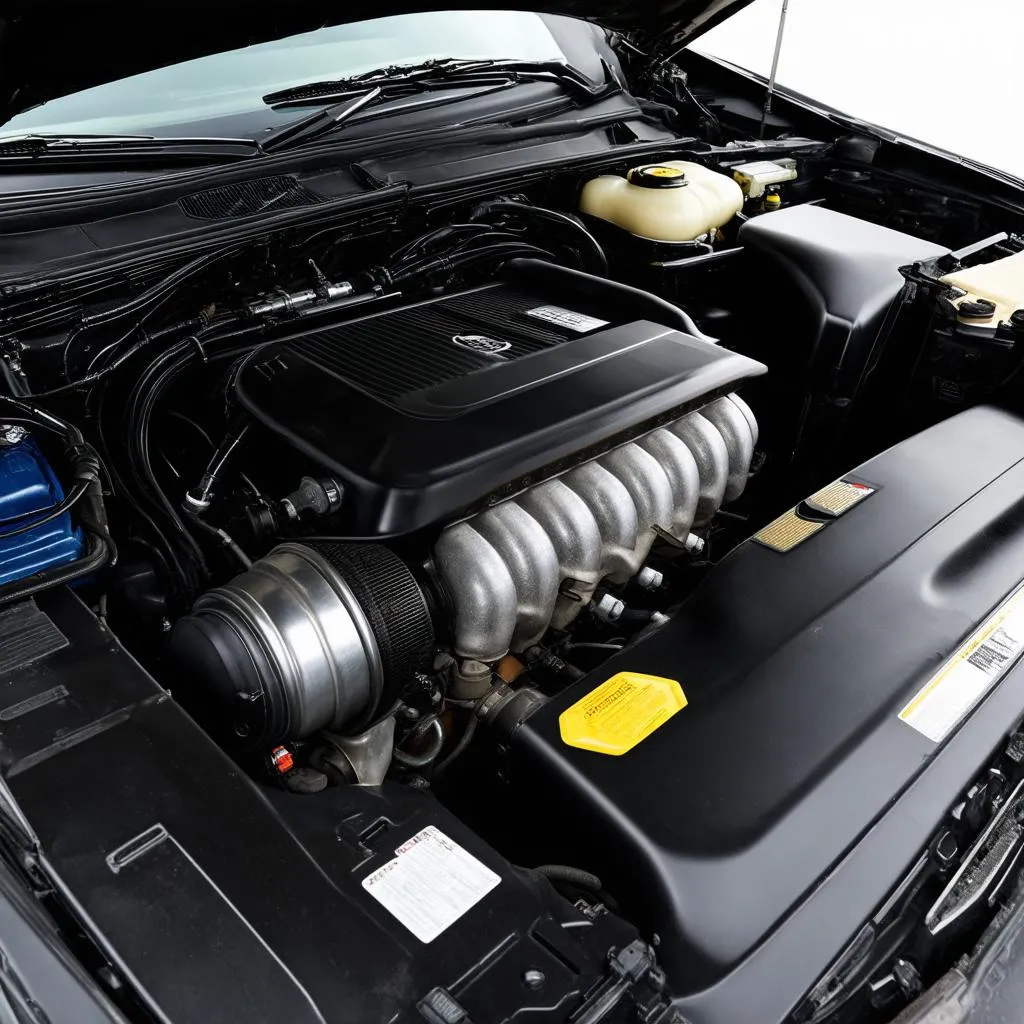Imagine this: You’re cruising down Sunset Boulevard in your sleek Chrysler 300, the California sun warming your face. Suddenly, a yellow light on your dashboard throws shade on your vibe. It’s the dreaded “Check Engine” light. You’re miles from your trusted mechanic in Pasadena, and worry starts to creep in.
But before you hit the panic button, remember this: that “Check Engine” light might not signal a major meltdown. It’s simply your car’s way of saying, “Hey, something ain’t quite right. Let’s get it checked out.” And within that message lies a secret code, a Chrysler-specific OBD II code, waiting to be deciphered.
Unmasking the Mystery: What are Chrysler Specific Obd Ii Codes?
Whether you’re a seasoned gearhead or just starting to explore under the hood, understanding OBD II codes can be a game-changer. Think of them as your car’s secret language. OBD stands for On-Board Diagnostics, and every car manufactured after 1996 speaks it.
“But what makes Chrysler codes special?”, you ask. Well, while all cars share a standard set of OBD II codes, Chrysler, like other manufacturers, has its own unique set of codes that provide detailed insights into the inner workings of your Chrysler, Dodge, or Jeep vehicle. These codes pinpoint the source of the problem, from engine hiccups and transmission glitches to even minor electrical faults.
“So, it’s like a customized checkup for my Chrysler?” You got it! It’s like having a direct line to your car’s brain, allowing mechanics and DIY enthusiasts to diagnose problems with laser-like accuracy.
Cracking the Code: How to Read Chrysler Specific Obd Ii Codes
Now, let’s talk about how to find and interpret these cryptic messages.
- Locate the OBD II port: In most Chrysler vehicles, it’s located under the driver’s side dashboard, near the steering column.
- Plug in an OBD II scanner: You can find these handy devices online or at any auto parts store.
- Retrieve the code: The scanner will display a code that looks something like “P0505” or “U1417.”
- Time to decode: This is where things get interesting. A “P” code indicates a powertrain-related issue, “B” for body, “C” for chassis, and “U” for network and communication systems. The numbers following the letter provide further details about the specific fault.
For instance, a “P0420” code on your Chrysler Pacifica might indicate a problem with the catalytic converter system, while a “U0100” on your Dodge Ram could point to a communication error with the engine control module (ECM).
 OBD Scanner Plugged In
OBD Scanner Plugged In
Beyond the Codes: Common Questions and Solutions
Knowing the code is just the first step. Here are some common questions and solutions related to Chrysler Specific Obd Ii Codes:
Q1: My Check Engine light is on, but my car seems to be running fine. Should I be worried?
A: It’s always best to err on the side of caution. While your car might seem fine, ignoring the Check Engine light could lead to more serious (and costly) problems down the road. A minor issue now, like a loose gas cap triggering an emissions code, could escalate if left unattended.
Q2: I got the code P0302. What does that mean, and how do I fix it?
A: A P0302 code typically indicates a misfire in cylinder 2. This could be due to a faulty spark plug, a bad ignition coil, or even a vacuum leak.
Solution: Start by inspecting and replacing the spark plugs and ignition coils in cylinder 2. If the problem persists, check for vacuum leaks or consult a trusted mechanic, especially if you’re not comfortable working on your car’s ignition system.
Q3: Can I reset the Check Engine light myself?
A: Yes, you can use an OBD II scanner to clear the codes and reset the light. However, keep in mind that this is just a temporary fix. If the underlying problem isn’t addressed, the light will come back on.
 Chrysler Engine
Chrysler Engine
Need a Helping Hand? We’re Just a Message Away
Diagnosing and fixing car problems can feel overwhelming, but remember, you don’t have to navigate the world of Chrysler specific OBD II codes alone.
If you’re looking for expert guidance or need help deciphering those cryptic codes, don’t hesitate to reach out to us on WhatsApp at +84767531508. Our team of automotive specialists is available 24/7 to provide personalized support and help you get back on the road with confidence.
For more insights into specific Chrysler OBD II codes, check out these helpful resources:
Remember, a little knowledge about your Chrysler’s language can go a long way in keeping your ride smooth, safe, and worry-free. Drive safe and stay informed!